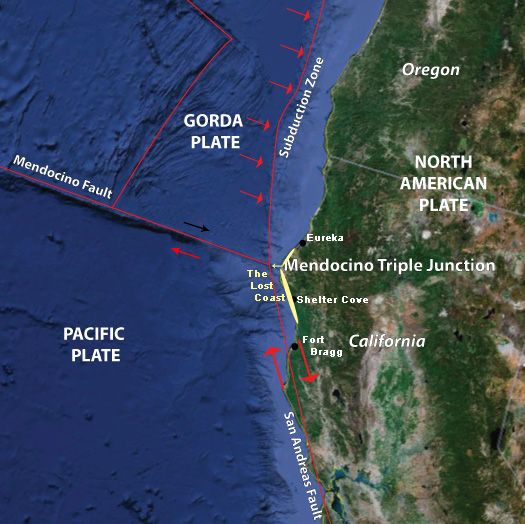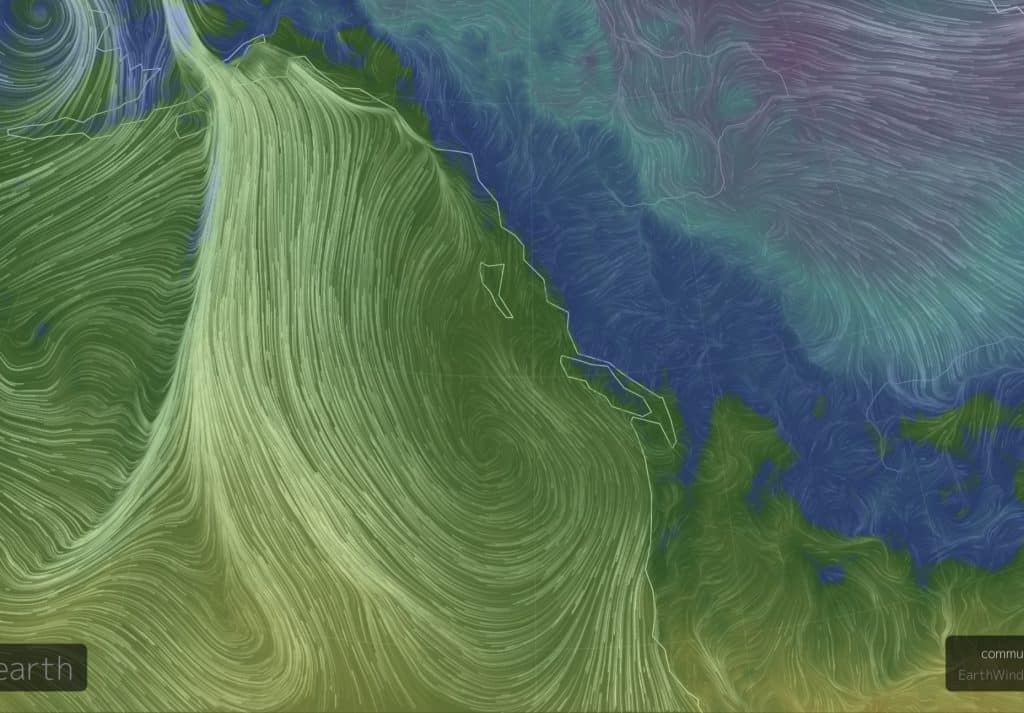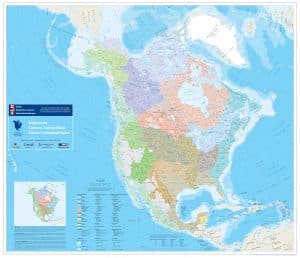Defining A Bioregion
“While there are few straight lines in nature, there are many definite and powerful edges—various ecotones, watershed divides, climatic zones, fault-lines and scarps. Careful attention should be given to such beginnings and endings, for these dramatic turnings in the earth serve as clear and powerful articulations of diversity.”
– David McCloskey
On Bioregional Boundaries
Bioregions are the natural countries of the planet, containing within them many nations, inhabitants, watersheds and ecosystems.
Boundaries in of themselves are not good or bad. They define the edges of things. Places where different zones meet and collide. Unlike many borders in our world today, bioregional boundaries are not an abstraction given to a place. Rather they are real, physical features which can be seen, felt, measured, and tested.
They are created through three different elements melding together:

- Hard Boundaries:
The defining features of a bioregion are often hard, often fractured edges. They include geology, topology, morphology – primal forces including: plate tectonics, subduction zones, upthrust zones, fracture zones, scarps, fault lines, volcanoes, mountain ranges. From hard boundaries, we usually get the external boundaries of a bioregion.From these features emerge how the area is acted upon by other elements – rainfall patterns, watersheds, wind, sediment, erosion patterns. - Soft / Fuzzy Boundaries:
From these ‘hard boundaries’ emerge softer ones. A bioregional layering that creates the ecoregions, biomes, ecosystems and probably the things we think of when we think of home. Our rivers, forests, streams, soil, animals, plant life. Some of these borders will still have hard edges, and others will blend, from one ecotone to another. From these sometimes softer borders, we often define our internal boundaries and ecoregions of a bioregion. - Human Culture:
Lastly, human culture – how we live in a place and our impact on it – is an incredibly important part of mapping our bioregions. As of the 1990’s, humans are now the second largest mover of dirt in the world, behind that of water, and ahead of wind. One of the the most important things that Peter Berg did when he adapted the term bioregion in 1971 was to include human beings as part of their ecosystem rather than removed from it. Human ways of living are important, because regardless of arbitrary boundaries, how climate change will impact an area, or fires burn, flooding happens, native ecosystems, plants, fish or animals recover, water quality and river health regenerates, drought and soil health measured – are all bioregional questions, and will each need a bioregional answer.
Together, with these three layers, the framework of a bioregion is the largest physical connection of scale that makes sense, and the furthest extent of it’s watersheds – because ultimately, every person and community living within a watershed must be able to substantively weigh in and contribute to those discussions which might impact them the most.
Does it Bioregion?

There can be many different determinants, ideas and definitions for what a bioregion is or isn’t – but above all else – below are three simple checkboxes that a bioregion must pass in order for it to be a bioregion.
- A bioregion is a land and water territory whose limits are defined by the geographical limits of human communities and ecological systems rather than by political boundaries.
- Such an area must be large enough to be able to be self-reliant and be able to maintain the integrity of its biological communities, habitats, and ecosystems.
- People Matter. Ultimately it is up to the people and inhabitants of a bioregion to determine what best represents them, their way of life and living. In addition, people can, and do often fundamentally change their natural environments. Often, whether they realize it or not, bioregions provide the basis for inhabitant cultures, identities that stem from the place, that have the ability to help determine or shape these boundaries.
Bioregional scales can be used as a framework to measure success and failure of sustainability and carbon neutrality. How much a bioregion can store, recycle, mitigate, and set natural limits for growth; meet the habitat requirements of keystone and indicator species; including human communities and the development of place appropriate technologies and ways of living.
While the edges of bioregions are usually hard, jagged edges – fault lines, volcanoes, subduction zones, mountains – where rivers start – within a bioregion lies a quilt of ecosystems and ecoregions, each different and requiring uniquely suited solutions for each area. From these hard edges, they control the shape and flow of energy – wind, water, rain, temperature, elevation, soil – that let a bioregion emerge. From this, watersheds, firesheds, foodsheds, airsheds. Agricultural habits. Certain types of energy generation favored over others. From these variations comes a level of adaptability in the face of change, and bioregional resilience. Ultimately, it is the determination for place appropriate technology and living, and by sharing a landbase and having common concerns, shared values, language and identity will arise.
Despite the internal differences within a bioregion, all of them must have some form of common connection in bioregional governance, because ultimately every community impacted along that waterway must be included in at least some basic level of decision making. These regions are not static. Rather their borders are constantly changing, and these changes give the ability for a bioregion to be able to adapt in the face of massive external or internal variation.
Can an Ecoregion also be a Bioregion?
Ecoregions are the rooms in the house – but if they pass the qualities of what defines a bioregion – they can also be a house too. To answer a common question – when we use the term “bioregion” we are referring to the top level of an independent, interconnected watershed system. Some ecoregions, if large enough can qualify as a bioregion, just as groups of bioregions can be part of a larger terra region or continent. Bioregions can be ecoregions, and ecoregions can be bioregions. Context and use determines which title to use. For example, the Salish Sea is large enough that it is a bioregion when referred to as an independent unit being looked at, or an ecoregion when referred to as part of the Cascadia bioregion.
In bioregional mapping – more important than blanket terms and definitions, is finding what works and makes sense for each area. There are hard and jagged lines – but also many areas of blending on which only by defining many different layers will create the ultimate picture.
Through the definition of a bioregion by Local Scale, based in San Francisco and the home of modern bioregionalism:
“Within a bioregion lies a mosaic of land or aquatic uses. Each patch provides habitats in which different species survive and flourish, and each has its own particular relationship to the region’s human population. All the elements of the mosaic are interactive; the management of a watershed affects riverine habitats, farms, estuaries, fisheries, and coral reefs. The components are also dynamic; each changes over time as rivers change course, fallow fields regenerate, storms batter coasts, and fires ravage forests. This dynamism gives a well-managed bioregion the resilience and flexibility to adapt to natural evolution and human-induced activity–be it changing climate or changing markets.”
Only together, do these things work together.
Why is having an accepted definition of Bioregion important?
The issue of arguing a “you are wrong and I am right” mindset when discussing the emerging idea of bioregional boundaries has sabotaged the advance of a bioregional approach since the 1970’s.
However, struggling to answer even answer basic questions about bioregions – what are the bioregions of the planet? what bioregion am I in? What are the bioregions of North America? In one sentence, what is a bioregion, how do you define bioregion? – often is what leads to misunderstanding and confusion over what a bioregional approach is. Every different group or organization right now must create its own definition, its own framework, each completely different based on their varying degrees of the idea, the history, and access they’ve had to resources or materials on the subject. On the same flip – the diversity and dialogue of these ideas however, is what has made the bioregional movement so special.
For the most part, this is a difficult conversation, because many industrialized areas have spent the last several hundred years erasing these connections to place and bioregional cultures. New bioregional identities and movements have not yet or are just starting to re-emerge. Everything we are doing, has to be created, reconnected and renewed. Right now, from a practical standpoint, beyond “go into the world and do it yourself” – we don’t have a lot of tools to say – here is what it is, how you can connect with it, and how we grow this idea beyond abstract ideas, scattered examples of success, that can inspire or change systems. We desperately need these pathways, networks and frameworks that anyone can hook into, no matter where they live, their background and the time they have available.
Lastly, we must be able to build these systems, and propagate these ideas faster than our corporate and capitalist counterparts who have the power to undo our work with the swipe of a pen. This ambiguity keeps the door open to co-option by large corporate or government agencies that use these regimes to reinforce capital, rather than to fundamentally rethink, dismantle and alter it.
As an educational tool, or entry point this is fine, but where this becomes a problem is that when governments or business, who have little connection or care about the fundamental philosophy of bioregionalism – use these frameworks disconnected from the idea. At it’s worse if people are excluded from these planning or development – it can lead to forms of ecological fascism or exclusion of specifically adapted indigenous cultures and ways of living within a place.
Out of many different definitions globally, ultimately down the road a few will end up making the most sense and being incorporated, adapted, used and built upon. In a world in which money can often speak the loudest, and influence the most people, bioregionalists must do the work to dig deep, find our definitions, and then hold to them.
Key Takeaways:
How big is a bioregion? How is it’s scale defined? Below are a few key pointers:
- A bioregion is an area defined by natural boundaries, rather than arbitrary human made ones.
- A bioregion is the full extent of the watersheds within an interconnected area, the largest sense of scale based on physical similarities that makes sense.
- A bioregion can be made up of many ecosystems, soil patterns, weather types, and in terms of scale is larger than an ecoregion, and smaller than a continent.
- While borders within a bioregion may be transitional, soft and fuzzy, bioregional borders tend to be jagged, and hard, such as mountain ranges, peaks, ridges, volcanoes, continental uplifts, tectonic plates and faults. These hard edges define how energy flows within a set of boundaries.
- Bioregional boundaries don’t stop at waters edge, but should be stretched outwards until the physical edges reveal themselves.
- A bioregion is the smallest unit in which the ecosystems and inhabitants can be self sustaining. This includes human habitation (food, water, energy generation, production, transportation, consumption and waste streams). It can be as small as one island, or depending on the inhabitants, be a part of an archipelago or connected island chain.
- Bioregions are natural countries, which may contain many nations, inhabitants and peoples.
- Culture plays a part in defining bioregions. Humans play a large role as part of their ecosystems, and shared concerns, values, language and culture stem from sharing a land base.


